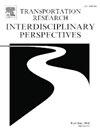Digital engagement for travel information among car and public transport users in the Netherlands
IF 3.9
Q2 TRANSPORTATION
Transportation Research Interdisciplinary Perspectives
Pub Date : 2024-11-01
DOI:10.1016/j.trip.2024.101285
引用次数: 0
Abstract
As the offer of digital services in transport expands, understanding users’ digital engagement and how it developed over time is important to make informed policy decisions. In particular, we lack an understanding of how both PT (public transport) and car users access and engage with digital technologies and perceive them to be necessary to travel. This article aims at bridging this gap, using a 2022 survey of representative samples from both populations in the Netherlands.
There is clear evidence of travellers getting more used to digital technologies over time. In 2022, at most 80% of car and PT users relied at least from time to time on their smartphone to look for travel information. As expected, higher digital skills correlate positively with the likelihood of using smartphone-based travel information. It is worth noting that PT users report higher digital skills than car users, while these samples do not differ significantly in terms of age and education levels. As such, low (perceived) digital skills might be a barrier to switching from the car to public transport.
Almost 75% of car and PT users think that travelling is more difficult nowadays without a smartphone, demonstrating a radical shift in societal expectations within a decade and a half. Alternatives like public information displays exist and are still used by the majority, but traditional communication channels are not deemed sufficient anymore to travel worry-free. These perceptions can contribute to shaping reality and may put those with a lower digital access at a disadvantage.
求助全文
约1分钟内获得全文
求助全文
来源期刊

Transportation Research Interdisciplinary Perspectives
Engineering-Automotive Engineering
CiteScore
12.90
自引率
0.00%
发文量
185
审稿时长
22 weeks
 求助内容:
求助内容: 应助结果提醒方式:
应助结果提醒方式:


